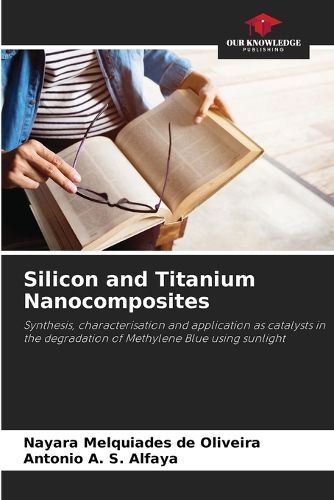Readings Newsletter
Become a Readings Member to make your shopping experience even easier.
Sign in or sign up for free!
You’re not far away from qualifying for FREE standard shipping within Australia
You’ve qualified for FREE standard shipping within Australia
The cart is loading…






In this work, a synthetic route was developed for the preparation of SiO?/TiO? nanocomposites by the sol-gel process, with silicon and titanium ratios of 80:20, 70:30 and 55:45. The nanocomposites were characterised using chemical analysis, SEM, EDS, FTIR, X-ray diffraction, specific surface area measurements and the diffuse reflectance technique. Using diffuse reflectance it was possible to determine the gap energy band and by using mathematical models it was possible to correlate the measured gap energy and make an approximate determination of the nanocrystallite size. The study of the photodegradation of methylene blue in aqueous solution using the prepared materials and natural sunlight was carried out with different contact times, pH and solution concentration, in order to observe the variation in photodegradation efficiency according to the variation in the proportion of silicon and titanium in the matrix.
$9.00 standard shipping within Australia
FREE standard shipping within Australia for orders over $100.00
Express & International shipping calculated at checkout
In this work, a synthetic route was developed for the preparation of SiO?/TiO? nanocomposites by the sol-gel process, with silicon and titanium ratios of 80:20, 70:30 and 55:45. The nanocomposites were characterised using chemical analysis, SEM, EDS, FTIR, X-ray diffraction, specific surface area measurements and the diffuse reflectance technique. Using diffuse reflectance it was possible to determine the gap energy band and by using mathematical models it was possible to correlate the measured gap energy and make an approximate determination of the nanocrystallite size. The study of the photodegradation of methylene blue in aqueous solution using the prepared materials and natural sunlight was carried out with different contact times, pH and solution concentration, in order to observe the variation in photodegradation efficiency according to the variation in the proportion of silicon and titanium in the matrix.